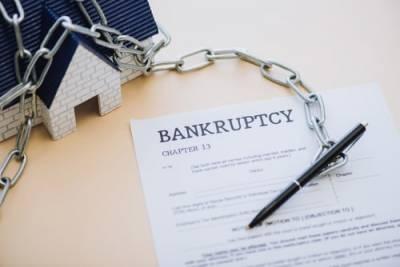How Is a Chapter 13 Bankruptcy Repayment Plan Created?
 If you have significant debts that have led to financial struggles for your family, you may be considering bankruptcy. If you want to be able to maintain ownership of your home, or if you want to avoid the repossession of a vehicle or other property, Chapter 13 bankruptcy may be the best option for you. In this type of bankruptcy, certain debts are grouped together in a repayment plan that will last either three or five years. After completing this plan, any unsecured debts that remain will be eliminated. As you prepare to file for bankruptcy, you will want to understand how your repayment plan will be calculated.
If you have significant debts that have led to financial struggles for your family, you may be considering bankruptcy. If you want to be able to maintain ownership of your home, or if you want to avoid the repossession of a vehicle or other property, Chapter 13 bankruptcy may be the best option for you. In this type of bankruptcy, certain debts are grouped together in a repayment plan that will last either three or five years. After completing this plan, any unsecured debts that remain will be eliminated. As you prepare to file for bankruptcy, you will want to understand how your repayment plan will be calculated.
Creating a Repayment Plan in a Chapter 13 Bankruptcy
When you file for bankruptcy, you will be required to provide documentation detailing information such as a list of all of your creditors, the total income you earn and how often you are paid, an inventory of all of your assets, and details about your regular expenses. This information will be used to determine your disposable income, or the amount that is available to pay debts after covering your living expenses.
Your disposable income will be determined by taking your income and subtracting all reasonable expenses that are necessary for the support of yourself and your dependents. Applicable expenses include the costs of food, clothing, utilities, medications, or other forms of medical care, taxes, and transportation expenses such as gas, car insurance, and vehicle maintenance. You can also set aside up to 15 percent of your gross income for charitable contributions. Your projected disposable income will be any amount that remains after deducting expenses, and this amount will be put toward your Chapter 13 repayment plan.
Debts that are grouped into the repayment plan will be repaid depending on the type of claim. Priority debts include most types of taxes, as well as fees and costs related to bankruptcy proceedings. These debts must be paid in full as part of the repayment plan. Secured debts that are used to purchase collateral, such as a car loan, must also be paid in full, or the creditor must receive at least the amount that the collateral is worth. Secured debts such as a home mortgage may also be paid in addition to making payments in the repayment plan, although any amounts that are past due must be made up during the plan. Unsecured debts, such as credit cards, may be partially repaid, and amounts that remain on these debts after you complete the plan will be discharged.
The length of your Chapter 13 repayment plan will depend on how much income you earn. If your income is below the median in your state, you will qualify for a three-year repayment plan. If your income is above the median, your repayment plan will typically last for five years.
Contact Our San Antonio Chapter 13 Bankruptcy Attorney
The Law Offices of Chance M. McGhee can help you determine whether Chapter 13 bankruptcy is the best choice for you or whether other alternatives may be available. We will work to make sure you complete all of your requirements during the bankruptcy process, allowing you to receive the fresh start you need. Contact our Kerrville bankruptcy lawyer at 210-342-3400 to schedule your free consultation today.
Sources:
https://www.uscourts.gov/services-forms/bankruptcy/bankruptcy-basics/chapter-13-bankruptcy-basics
https://tryascend.com/blog/chapter-13-calculator/






